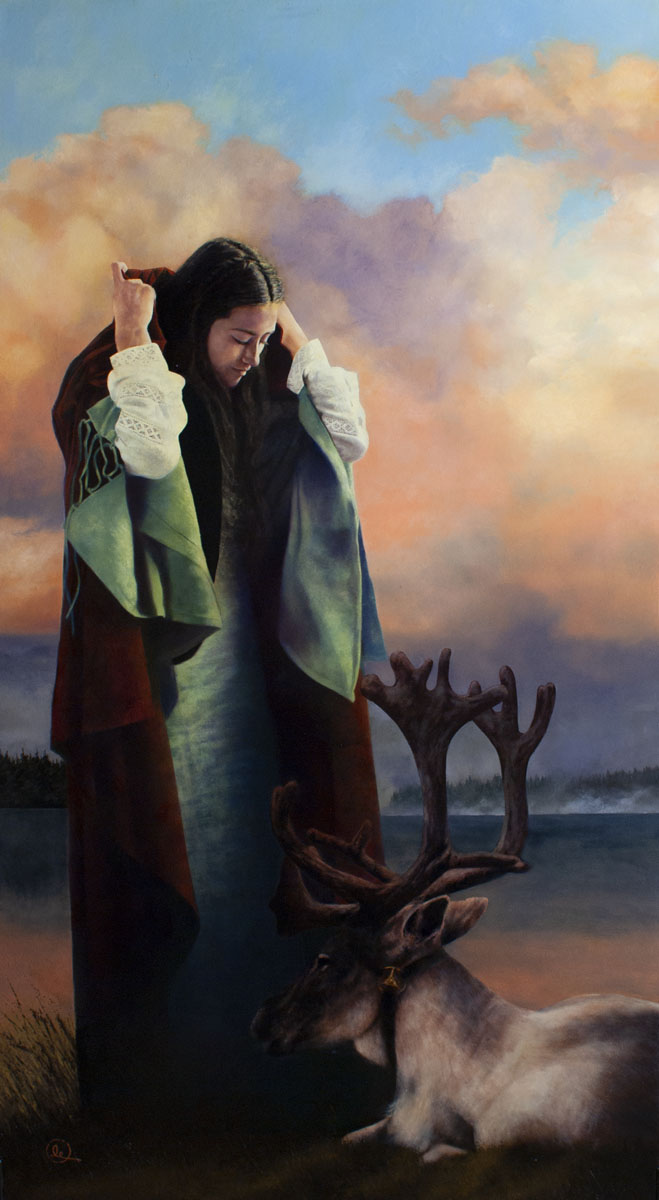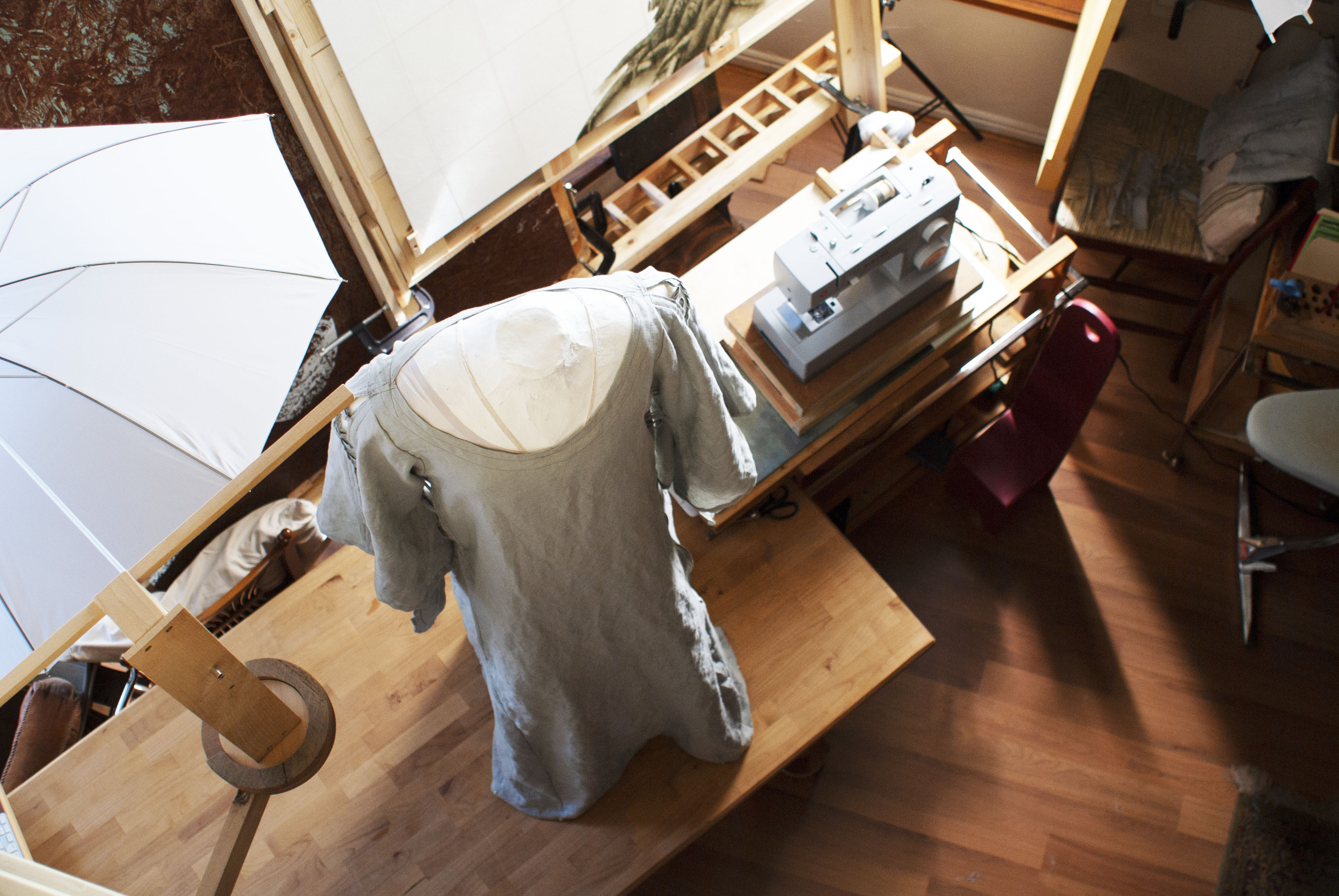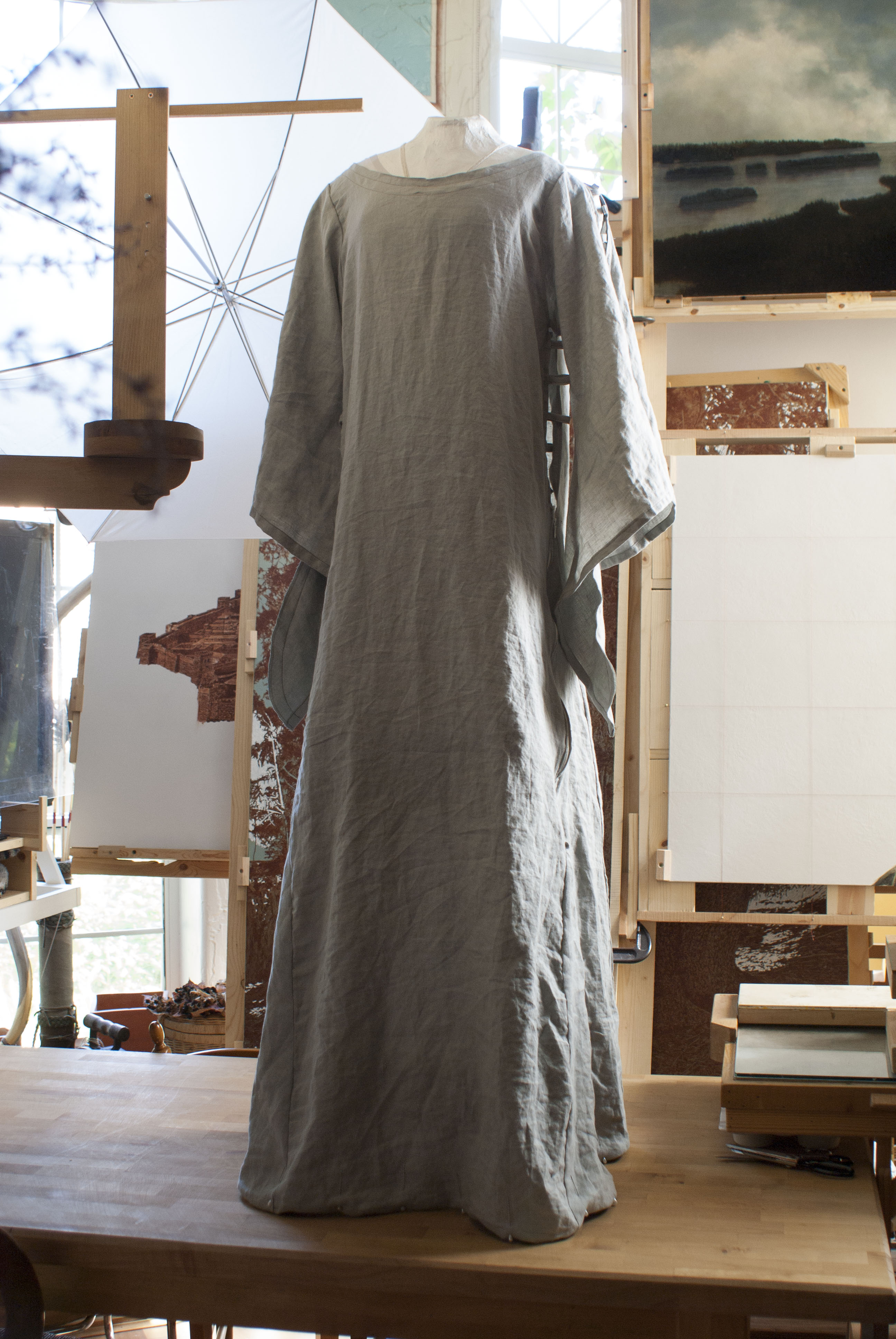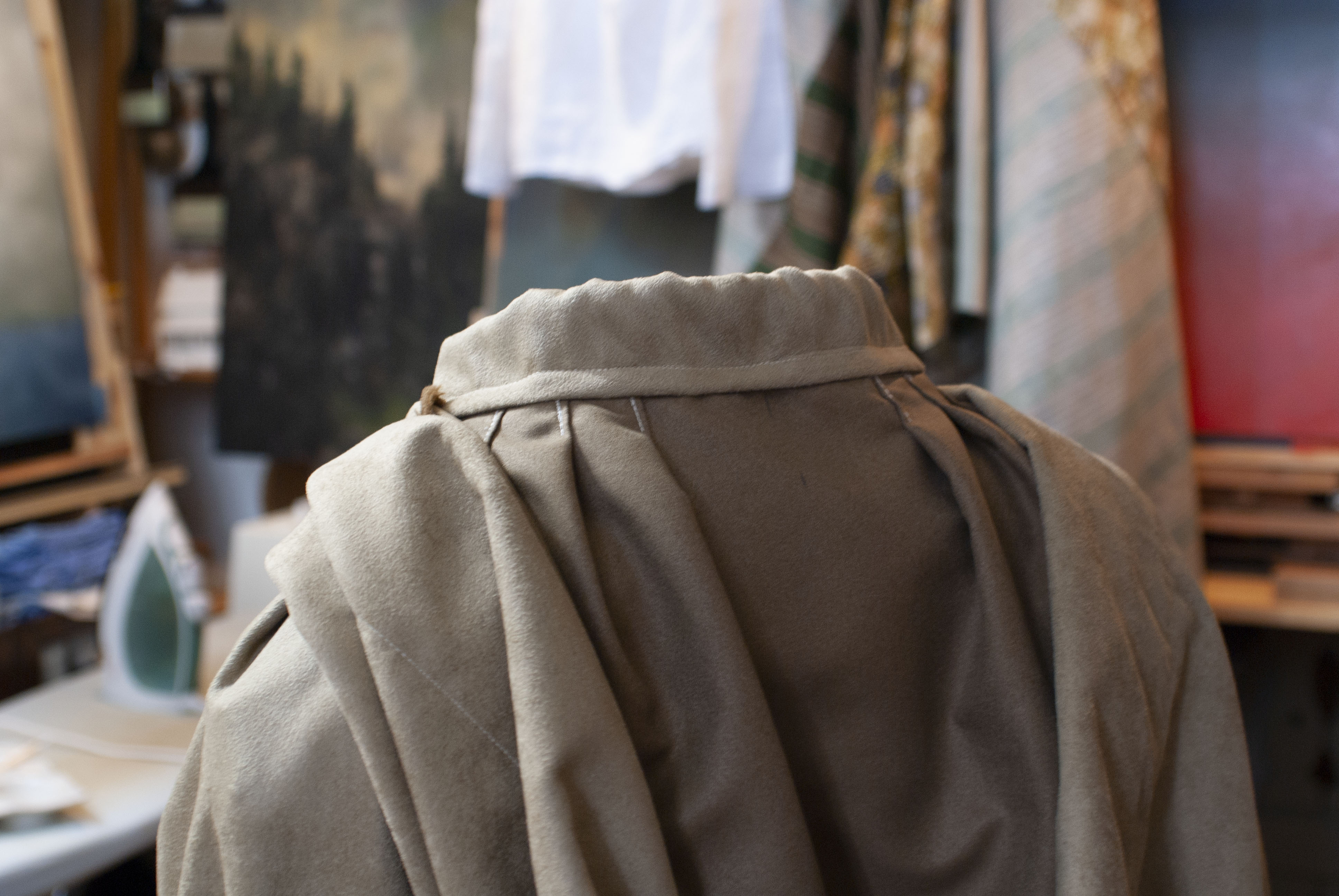Nothing is ever really wasted
By Al R. Young
 |
| Lunta jo Vanoe (Lunta and Vanoe) by Al R. Young |
This handmade, original oil painting was created by the artist in the studios at Ben Haven.
It is part of The Isles of Rune Project, an ongoing creative endeavor of the Artists of Al Young Studios.
Read more . . .
It is part of The Isles of Rune Project, an ongoing creative endeavor of the Artists of Al Young Studios.
Read more . . .
milestones
Painting completed — 2021 July
Final composition (no. 14) of background implemented — 2021 May
Starts painting with new toxin-free palette — 2019 May
Brushwork begins — 2018 October
Prepares the support and ground — 2018 July
First composition completed — 2018 March
Dress and cloak completed — 2017 September
Preliminary photo shoot (first of 5) — 2017 July
Research and planning for costumes and shoots — 2017 June
Based on regular entries in the project journal for this painting, creation of the artwork involved approximately 142 painting sessions (from composition and panel preparation to completion of brushwork).
equipment created or modified for this project
Mounting for handmade dress form
Adds sprocket tracks and wings to piano-back easel
Ledge for piano-back easel
Three bridges for piano-back easel
dimensions (unframed width x height)
36 in. x 64.5 in.
support
Panel
costumes, miniatures, and props created for this project
Dress prototype
Dress
Cloak
methodology
This section presents only one or two items that may be of interest to professional artists, amateurs, and others interested in the work of the Studios.
One of the most important aspects of this painting project was its duration. The following Newsroom article talks about the workflow of which this painting was part:
Snapshot of an artist's workflowPlanning
If I planned everything down to the proverbial gnat's whisker, I don't think I would even start a painting and I certainly wouldn't finish it. The work would be boring—tedious beyond tolerance. On the other hand, without any planning, I might complete a painting every lifetime, but even that might be stretching it. So, what's the right amount of planning?
My off-the-cuff reply would probably be "all the tangibles and just enough of the intangibles to know you're headed in the right direction." Too much planning plans the life out of a project and not enough planning ensures that the result—even if it is completed—will never be lifelike. For example, I try to plan as far ahead as possible for things like materials, tools, workspace, health, ideas, research sources, etc. But when it comes to something like composition, where (in my thinking and planning) I start the brushwork and where I wind up (in terms of the completed painting) is almost always a matter of percentages or ratio between concept and completion. Even when I think I've got a stable composition and a relatively problem-free path stretching ahead of me, the final result is almost always different. And the natures of the difference varies (e.g., compositional elements, colors).
In the case of Lunta jo Vanoe, the foreground figures are almost one-to-one in terms of the agreement between composition and finished painting. Almost always, I paint the background first, then I paint the figures. The primary reason for this is to allow unrestrained motion in painting the background. I want the background to be as lifelike a whole as possible, with or without a subject in front of it. And if the foreground subject is already present (painted in place), I feel mentally and emotionally fenced-in. But in the case of Lunta, I painted Lunta and Vanoe first, then the background. Before the painting was completed, I logged fourteen compositions focused almost exclusively on reconciling background and foreground. And I'm glad I painted the foreground first and went through all the iterations of backgrounds, because, ultimately, the background simply was not delivered to my imagination until I was ready for it. After all, planning is not entirely the artist's purview.
Costume
Costume creation was another aspect of the project to which considerable creative effort and time were devoted. And while costuming plays a major role in the finished painting, a surprising percentage of the dress and cloak remain unseen. And yet, I wonder whether anything that has been present, either in the finished product or the journey to its creation, is ever entirely absent.
Everything we do is suffused with our experience, not to mention everything we hope for. I have painted from purchased costume elements as well as costumes and props that I made. I enjoy working with both. I endeavor to execute both with all the skill I can, but the experience I have had with that which I made differs (dare I say materially?) from the way I feel about something purchased. Of course, purchasing has its own emotional provenance, but there is something about making part of the material culture or the built environment of a painting's world that adds a depth of enjoyment and expression during the creative process. In painting artifacts with either provenance, I can and do strive for excellence, but excellence is no substitute for the mental and emotional attachment I feel for what I made, and I believe that gets communicated simply because it is there. Besides, I also get a kick out of making costumes and props, and that enjoyment augments my adventure while on the creative journey.
 |
| The studio (seen from above) is temporarily configured for sewing. |
 |
| The finished dress, without its laces for bodice and slit bell sleeves; however, tabs for the laces have been sewn in place. |
 |
| Pleated gathers in the base of the hood, where it attaches to the collar of the cloak. |
Tags: 3.00.0302.010, 2021, Project commentaries, Tips and techniques, Tools supplies and operations
Browse articles by year: 2025 . 2024 . 2023 . 2022 . 2021 . 2020 . 2019 . 2018 . 2017 . 2016 . 2015 . 2014 . 2013 . 2012 . 2011 . 2010 . 2009 . 2008 . 2007 . 2006 . 2005 . 2004 . 2003 . 2002 . 2001 . 2000 . 1999 . 1998 . 1997 . 1996
Browse articles by topic: Art lessons . BenHaven Archives . Blank art diaries . Fine art photography . Framing . Illustration . Inspiration and creativity . Isles of Rune . Limited Editions Collection . My Fathers Captivity . News . Novellas . Oil paintings and prints . Operations announcements . Orders and shipping . Overview . Portfolios . The Papers of Seymore Wainscott . Project commentaries . Recipes by Nancy Young . Recommended reading . Recommended viewing . Temple artworks . The Storybook Home Journal . Tips and techniques . Tools supplies and operations
Browse articles by topic: Art lessons . BenHaven Archives . Blank art diaries . Fine art photography . Framing . Illustration . Inspiration and creativity . Isles of Rune . Limited Editions Collection . My Fathers Captivity . News . Novellas . Oil paintings and prints . Operations announcements . Orders and shipping . Overview . Portfolios . The Papers of Seymore Wainscott . Project commentaries . Recipes by Nancy Young . Recommended reading . Recommended viewing . Temple artworks . The Storybook Home Journal . Tips and techniques . Tools supplies and operations